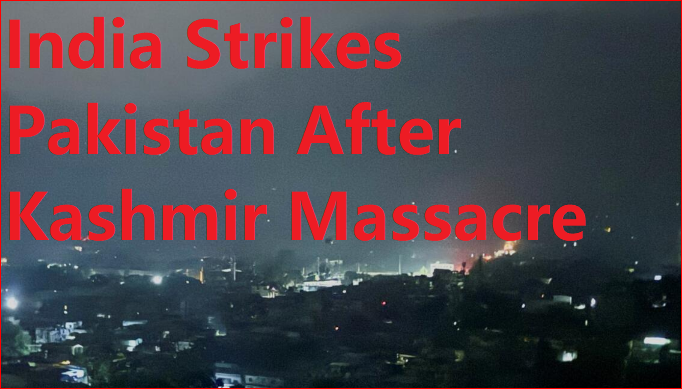Introduction
On May 7, 2025, the Indian Armed Forces launched “Operation Sindoor,” a series of missile strikes targeting alleged terrorist infrastructure in Pakistan and Pakistan-administered Kashmir. This military action was a direct response to the April 22 Pahalgam attack in Indian-administered Kashmir, which resulted in the deaths of 26 civilians. The operation has significantly escalated tensions between the two nuclear-armed neighbors, drawing international concern over the potential for broader conflict.
Background: The Pahalgam Attack
The Pahalgam attack on April 22 involved armed insurgents ambushing tourists in the Baisaran Valley of Jammu and Kashmir, killing 26 individuals, predominantly Hindu tourists. The Resistance Front (TRF), an offshoot of the Pakistan-based group Lashkar-e-Taiba, claimed responsibility. India accused Pakistan of supporting the attackers, leading to a series of diplomatic and military responses.
Operation Sindoor: The Indian Offensive
In the early hours of May 7, India initiated Operation Sindoor, conducting missile strikes on nine locations in Pakistan and Pakistan-administered Kashmir, including Muzaffarabad, Kotli, and Bahawalpur. The Indian Ministry of Defence stated that the targets were terrorist infrastructures linked to groups responsible for the Pahalgam attack. India emphasized that the operation was “focused, measured, and non-escalatory,” aiming to avoid civilian casualties and not targeting Pakistani military facilities.DIE WELT+7Wikipedia+7Latest news & breaking headlines+7
Pakistan’s Response
Pakistan condemned the strikes as an “act of war,” reporting at least eight civilian deaths and 35 injuries, including children. The Pakistani military claimed to have shot down five Indian fighter jets and a drone, and to have destroyed an Indian brigade headquarters. Prime Minister Shehbaz Sharif vowed retaliation, and Pakistan closed its airspace to Indian aircraft, suspended diplomatic ties, and expelled Indian diplomats.ElHuffPost+6Latest news & breaking headlines+6Wikipedia+6Wikipedia+1AP News+1Wikipedia+4Wikipedia+4AP News+4
Escalation and Border Skirmishes
Following Operation Sindoor, cross-border skirmishes intensified along the Line of Control (LoC) and the International Boundary. Both sides reported casualties, with India accusing Pakistan of violating the ceasefire agreement multiple times. The situation has led to a significant military buildup on both sides of the border.
International Reactions
The international community has expressed deep concern over the escalating tensions. UN Secretary-General António Guterres called for maximum restraint, urging both nations to avoid further escalation. The United States and other global powers have also appealed for calm, emphasizing the need for diplomatic solutions to prevent a full-scale conflict.Wikipedia+1AP News+1
Civil Defense Measures in India
In anticipation of potential retaliation, India conducted a nationwide civil defense drill, “Operation Abhyaas,” on May 7. The exercise involved air raid siren tests, blackout simulations, and evacuation drills across 244 districts, aiming to bolster civilian preparedness in the event of further hostilities.Wikipedia+2Wikipedia+2Wikipedia+2
Strategic Implications
The current standoff has significant strategic implications for South Asia. The suspension of the Indus Waters Treaty by India and the closure of Pakistani airspace have disrupted critical economic linkages. The situation threatens regional stability, with potential impacts on global energy markets and international trade routes.WikipediaWikipedia+2Asia Times+2Wikipedia+2
Conclusion
Operation Sindoor marks a significant escalation in India-Pakistan relations, highlighting the fragile nature of peace in the region. As both nations navigate this crisis, the international community’s role in facilitating dialogue and de-escalation becomes increasingly vital to prevent a catastrophic conflict.
Further Reading:











